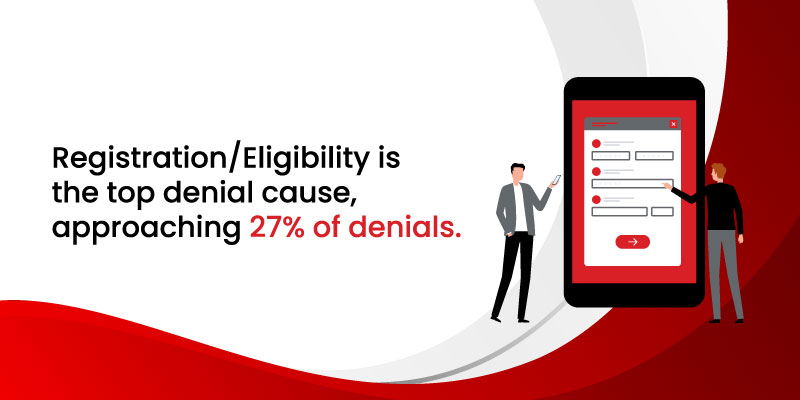Insurance Eligibility Verification in Healthcare: Challenges, Best Practices, and Emerging Trends

What Is Insurance Eligibility Verification?
Insurance eligibility verification is the process of checking whether a patient’s health insurance policy covers a specific medical service or treatment. This process is crucial for healthcare providers to ensure they receive reimbursement for their services.
Insurance eligibility verification is a critical step in the healthcare industry that determines a patient’s coverage and benefits before receiving medical services.
How to Check Insurance Eligibility Verification
The eligibility verification process involves contacting the patient’s insurance provider to confirm their coverage status and the benefits they are entitled to. The process typically involves verifying the patient’s demographic information, insurance plan details, and coverage dates.
Healthcare providers use various methods to verify a patient’s insurance eligibility, including online portals, automated phone systems, and manual calls to insurance companies. Some providers also use third-party verification services to streamline the process and reduce the risk of errors.1
Top Ways to Verify Patient Insurance Eligibility
The Importance of Insurance Eligibility Verification
The insurance eligibility verification process is essential for several reasons. First, it helps healthcare providers to ensure they will receive payment for the services they provide.
Without this verification, healthcare providers risk providing services to patients who may not be covered by their insurance plan, leading to denied claims and unpaid services.
This can have a significant impact on the financial stability of healthcare organizations.
How Else Can Eligibility Verification Help Healthcare?
Insurance eligibility verification can also improve patient care. Patients that are not covered by their insurance plan for a particular medical service may hesitate to seek treatment, leading to delayed or inadequate medical care.

Common Challenges in Insurance Eligibility Verification
Human Error
One of the primary challenges in insurance eligibility verification is human error. Healthcare staff responsible for verifying insurance information can make mistakes when manually entering data, such as the patient’s insurance ID, date of birth, or policy number. Even small errors can lead to denied claims, delayed payments, and costly appeals.
What is Human Error?
Incomplete or Inaccurate Patient Information
Outdated Systems
Limited Access to Insurance Information
Limited access to insurance information is another challenge. Healthcare providers may have difficulty obtaining information about a patient’s insurance coverage, especially if the patient has recently changed insurance plans or has multiple insurance plans.
Inactive Insurance Policies
Patients may have insurance coverage, but their policy may be inactive or lapsed, meaning they are not currently covered for medical services.
This can occur if the patient fails to renew their policy or the insurance provider cancels it due to non-payment or other reasons.
Secondary Insurance Policy

Best Practices For Insurance Eligibility Verification to Overcome Challenges
To overcome the challenges associated with insurance eligibility verification in healthcare, providers can implement best practices to streamline the verification process and ensure accurate and timely payment for services rendered.
Here are some of the best practices for eligibility verification:
Gathering Complete Patient Information
To gather complete patient information, healthcare providers can use online patient registration systems, patient portals, or other electronic tools to collect and verify patient information.
Utilizing Electronic Verification Systems
Another best practice for eligibility verification is utilizing electronic verification systems. Electronic verification systems can streamline verification by providing real-time information about a patient’s insurance coverage.
These systems can also alert healthcare providers to potential errors or issues, allowing them to take corrective action before services are rendered.
Regularly Updating Insurance Information
Implementing Quality Control Measures
Healthcare providers should also focus on implementing quality control measures. These measures ensure insurance eligibility verification processes are effective and efficient.
Quality control measures can include regular audits of patient information and insurance verification processes and ongoing training for staff responsible for insurance eligibility verification.
Emerging Trends in Insurance Eligibility Verification
Artificial Intelligence (AI)
What is Artificial Intelligence?: A Quick Overview
Blockchain Technology
Blockchain technology is another emerging trend in insurance eligibility verification. Blockchain technology can provide a secure and transparent way to store and share patient information, including insurance coverage details.
Integration with Electronic Health Records
Electronic health records (EHRs) are widely used in healthcare today, and they are becoming an increasingly important tool in insurance eligibility.
By integrating eligibility verification with EHRs, healthcare providers can automatically verify patient insurance information and flag potential issues or errors.
Mobile Verification Applications

Legal and Ethical Considerations in Insurance Eligibility Verification
Insurance eligibility verification is not just a matter of administrative and financial processes, but it also involves legal and ethical considerations.
By following legal and ethical guidelines, healthcare providers can build trust with their patients and maintain the integrity of the insurance eligibility verification process.5
Patient Privacy and Confidentiality
Healthcare providers should implement strict security protocols to protect patient privacy and confidentiality, including data encryption, secure data storage, and password protection.
They should also train employees on the importance of patient privacy and confidentiality and properly handling patient information.
Compliance with HIPAA Regulations
HIPAA requires healthcare providers to implement strict security measures to protect patient information and to obtain patient consent before sharing their information.
When verifying insurance eligibility, healthcare providers must comply with HIPAA regulations.
Compliance with State and Federal Laws
In addition to HIPAA regulations, healthcare providers must comply with state-specific laws governing insurance eligibility verification and other healthcare practices.
Failing to comply with state and federal laws can lead to serious consequences, such as fines, legal action, and damage to the provider’s reputation.
Avoiding Discrimination and Bias
Impact of Insurance Eligibility Verification on Healthcare
Improved Patient Care
Insurance eligibility verification can help healthcare providers ensure that patients receive the appropriate care for their medical conditions.
By verifying insurance coverage and eligibility, healthcare providers can determine the level of care a patient requires and develop a treatment plan appropriate for their insurance coverage.
Reduced Denied Claims and Rejections
Increased Revenue for Healthcare Providers
By streamlining the insurance eligibility verification process, healthcare providers can reduce administrative costs associated with verifying insurance information manually. This can help healthcare providers allocate resources more efficiently and increase revenue.
Improved Patient Satisfaction and Trust

instantvob® Helps You Focus On What Matters Most: Patient Care
Built with a mobile-first approach, instantvob® provides healthcare providers real-time access to verification of benefits (VOB) and patient coverage information. With our platform, you can make fast decisions on admissions for treatment and therapies, saving you hundreds of hours and providing quick and accurate reimbursement estimates.
What Does Our Platform Offer?
Our platform is tailored for hospitals, substance use facilities, mental health centers, and individual practitioners, providing an accurate, easy-to-use, and compliant solution. With instantvob®, you can increase your census and reduce collection outcomes.
Acquiring a patient’s active status, deductible, co-pay, and co-insurance information when insurance company support is unavailable reduces denials, increases admissions dramatically, and helps ensure insurance payments are received promptly.
How Does Our System Work?
With instantvob®, you only need five patient identifiers to go to work in real-time, outputting comprehensive VOB data, including patient deductible, covered amount, out-of-pocket costs, pharmacy benefit coverage, drug access restrictions, coverage alerts, and dispense options.
Conclusion
While various challenges are associated with insurance eligibility verification, healthcare providers can mitigate them by implementing best practices, adopting emerging technologies, and staying up-to-date with legal and ethical considerations.
Reach Out to Learn More
If you’d like to learn more about how instantvob® can help optimize insurance eligibility verification, don’t hesitate to contact us today.
Resources
- https://www.businessnewsdaily.com/16499-insurance-verification.html
- https://blogs.perficient.com/2017/10/03/how-ai-verifies-insurance-eligibility-to-benefit-members-plans/
- https://www.modernhealthcare.com/opinion-editorial/how-blockchain-could-ease-frustration-payment-process
- https://chisw.com/blog/developing-a-health-insurance-application/
- https://www.ncbi.nlm.nih.gov/pmc/articles/PMC4394583/
- https://www.experian.com/blogs/healthcare/2023/02/4-benefits-of-health-insurance-eligibility-verification-software/#:~:text=The%20consequences%20of%20failing%20to,denied%20claims%20and%20delayed%20payments.
Learn More About How instantvob® Can Help You Get the Most Out of Healthcare


